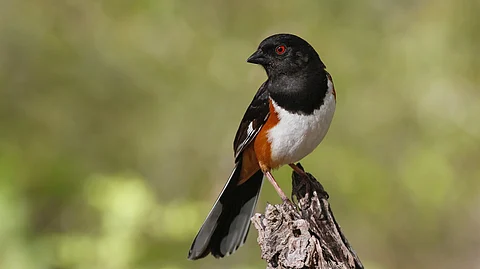

Bird populations across the United States are continuing to decline from the east coast to the west, with even bright spots ‘beginning to dim’ according to the 2025 US State of the Birds report released on March 13, 2025.
About a third of American birds (229 species) are of high or moderate concern due to low populations, declining trends or other threats to their survival, as per a statement by Cornell University, whose scientists were part of the team that published the report.
Both Eastern and Western forest birds are continuing to decline overall, and the rates of decline are increasing in the West.
Meanwhile, grassland and arid-land birds in the US are among the fastest declining groups (43 per cent and 41 per cent declines, respectively, since 1970).
Waterfowl populations, which have increased overall since 1970, have declined by 20 per cent since 2014, as per the report which was presented March 13 at the 90th North American Wildlife and Natural Resources Conference.
The waterfowl declines have been attributed to drought, rollbacks in wetland protections and conversion of wetlands to row-crop agriculture.
“In total, 42 species are classified as Red-Alert Tipping Point Species – including greater prairie-chicken, yellow-billed magpie and tricolored blackbird – meaning they have perilously low populations. An additional 37 species are considered Orange Alert, indicating that their populations are declining long-term, and that those declines are accelerating. Birds in this group include widespread species such as chimney swift, evening grosbeak and Eastern towhee,” noted the statement by Cornell.
“The rapid declines in birds signal the intensifying stressors that wildlife and people alike are experiencing around the world because of habitat loss, environmental degradation and extreme weather events,” the statement quoted said Amanda Rodewald, Garvin Professor and senior director of the Cornell Lab of Ornithology’s Center for Avian Population Studies, and co-chair of the science committee for the new report
However, the report offers hope by noting that concerted efforts and strategic investments can recover bird populations.
For instance, a 2009 initiative to coordinate funding and management across 16 coastal states led to a 43 per cent increase in the regional population of American oystercatchers, a shorebird species now bucking the overall trend of declines.
The report also recommends activities like conservation ranching, coastal restoration, forest renewal and seabird translocation. All these can spark turnarounds for birds.
“Many bird populations are struggling. But a proven blueprint for success is science-based planning and collaborative investment in habitat conservation,” the Cornell statement quoted Steve Adair, chief scientist for Ducks Unlimited.
The 2025 report comes over five years after a landmark study in the journal Science showed that North American bird populations declined by nearly 30per cent since 1970.
“When we see declines like those outlined in the report, we also need to remember that if conditions are not healthy for birds, they’re unlikely to be healthy for us,” Rodewald warned.